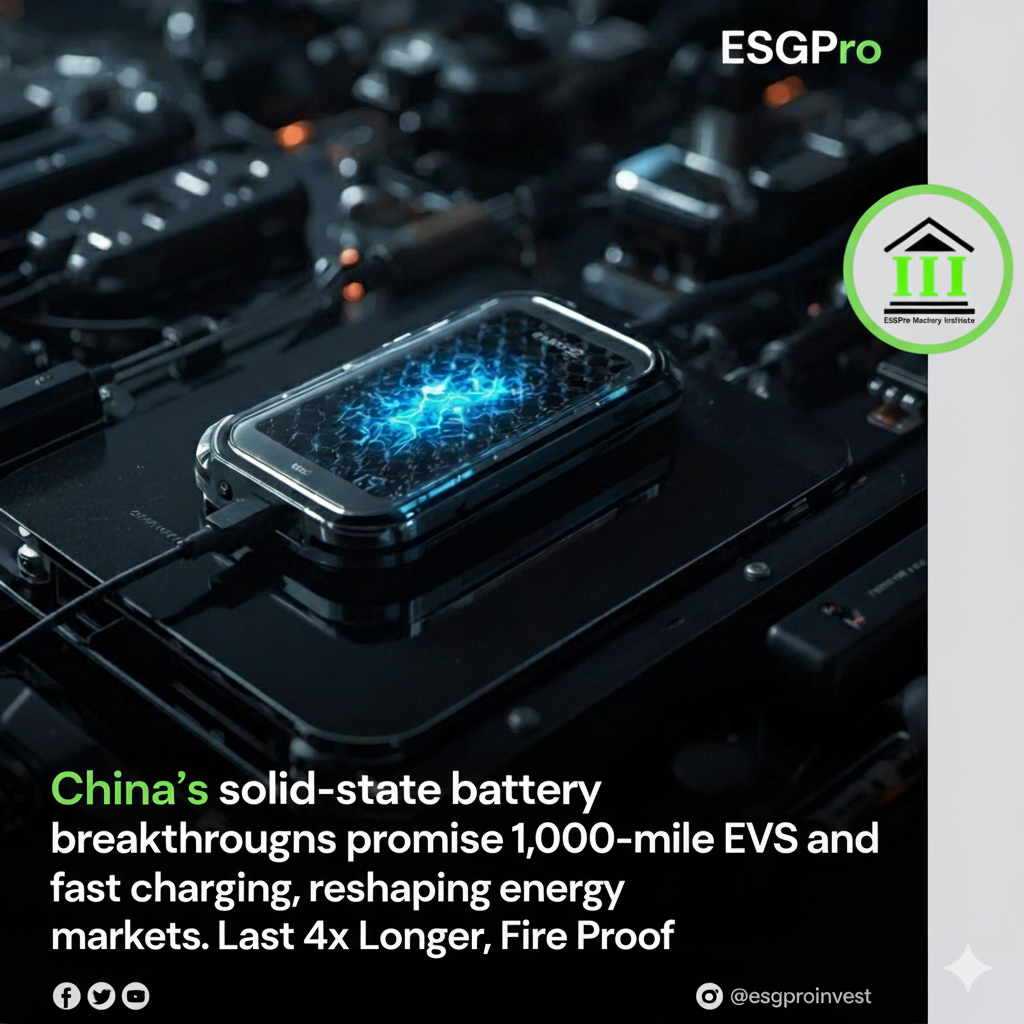China’s rapid advancements in battery technology, particularly in solid-state batteries, are set to upend the global landscape for electric vehicles (EVs), energy infrastructure, and industrial supply chains. Promises of 1,000-mile ranges and high-speed charging—projected to arrive by 2027—have already forced Western automakers, including Tesla, to reinvent their strategies, moving boldly into robotics and artificial intelligence as well. Meanwhile, these breakthrough batteries are poised to reach North America, challenging the position of oil-dependent economies like Alberta.
Chinese Battery Technology: A Deep Tech Shift
Solid-state batteries, which replace flammable liquid electrolytes with stable solids, have been a long-standing goal for the industry. By 2027, Chinese giants such as CATL and BYD expect to launch small-batch production of solid-state batteries, greatly narrowing the energy gap compared to gasoline-powered cars. BYD’s real-world tests show ranges of up to 1,500 km (932 miles) with charging times as short as 12 minutes, all thanks to batteries with energy densities around 400 Wh/kg—more than double today’s standard lithium-iron phosphate (LFP) cells. Gotion High-Tech has debuted similar high-performance batteries for use in both cars and next-generation applications like flying taxis and humanoid robots, underlining the versatility and industrial depth of this tech wave.
Key Breakthroughs Powering the Revolution
Recent years have seen China deliver dual breakthroughs: the first experimentally verified explanation of solid-state battery short-circuit mechanisms and the release of the industry’s first international standard for all-solid-state batteries. Chinese research teams visualized, at the nanoscale, how lithium deposits within batteries create “soft” and eventually irreversible “hard” short circuits, charting a new path to safer and longer-lasting designs. These milestones solidify China’s lead and create a predictable timeline for commercial rollout.
Energy density is at the forefront, with the latest prototypes achieving up to 500 Wh/kg—enabling ultra-compact battery packs that store far more energy per kilogram than today’s mainstream lithium-ion cells. Solid-state electrolytes also translate to non-flammable, thermally stable batteries, reducing the risks of thermal runaway and fire. This leap is pivotal for both passenger EVs and emerging transport verticals like electric vertical take-off and landing vehicles (eVTOLs).
Tesla’s Response: From EVs to Robots
China’s ascent has made even the industry’s top players rethink their futures. Tesla, faced with the prospect of Chinese battery companies disrupting its primary product line, has shifted focus to buybacks and investing in robotics, self-driving software, and partnerships that may one day allow it to integrate advanced Chinese batteries into its products. Tesla’s openness to adopting third-party battery tech marks a dramatic departure from its former “full stack” approach, as it works to defend its technology leadership and market share.
Tesla’s retreat from relying solely on its own battery research is a direct reaction to the scale of China’s industrial might: China now has the industrial scale, supply chain depth, and government backing to outpace virtually every global competitor. The country’s research alliances with automakers, universities, and public laboratories have created a dense ecosystem poised to rapidly commercialize any scientific breakthrough.
Shifting Markets: Canada and the Looming Oil Risk
As solid-state batteries land in North America, Canada is forecast to become a key entry point. Partnerships with Chinese battery makers will enable both legacy OEMs and EV startups to market cars capable of 1,000 miles (1,600 km) per charge, with recharge times of less than 15 minutes. These capabilities attack “range anxiety” head-on and will likely drive faster-than-expected EV adoption, directly impacting petroleum consumption in regions like Alberta, where oil remains an economic mainstay.
Government and oil industry leaders in Alberta now face mounting pressure to reposition the province’s economy. Experts warn that as solid-state batteries start seeing demonstration models in late 2027 and broader vehicle integration by 2030, the global pace of oil demand destruction will accelerate. This transformation will permeate logistics, public transit, and heavy industry, reshaping demand curves for oil products while forcing the province to redouble efforts in renewable energy and new tech sectors.
Remaining Hurdles and Market Outlook
Despite the promise, mass adoption is not without hurdles. Experts caution that solid-state batteries, despite lab success, are yet to show high reliability, safe operation, and scalable manufacturing at consumer prices. As of 2025, costs remain triple those of advanced lithium-ion packs; scaling production and solving material challenges remain urgent tasks for Chinese and global battery makers alike.
Still, with a detailed roadmap, international standards, and concerted R&D efforts, China is on track to dominate the supply of next-generation batteries by the end of the decade. This pivotal shift promises to turbocharge the move to electric mobility, autonomous machines, and ultimately, a new energy landscape that will leave oil-dependent economies with hard choices.
China’s audacious push in battery technology is setting the pace for the world. Alberta, and all regions built on oil, must face the rising tide—or risk getting swept away.

